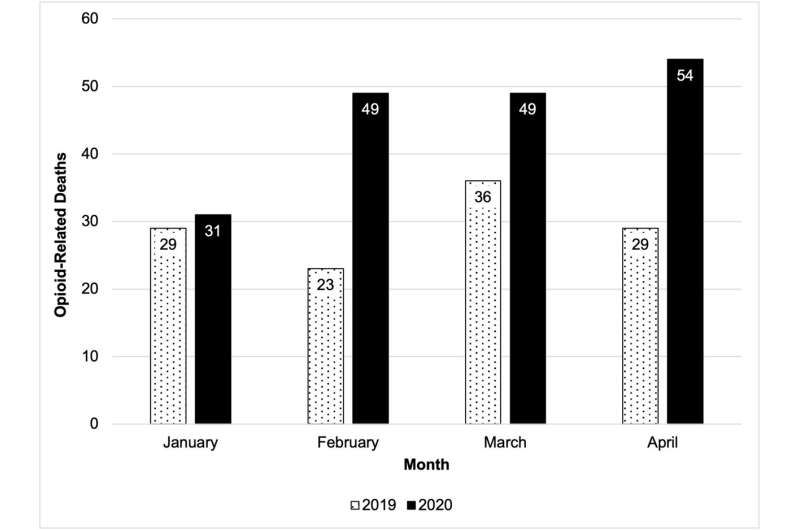Opioid-related deaths increased among less-educated whites following LA County’s stay-at-home order

Many communities were already struggling to combat the ongoing opioid epidemic when the COVID-19 pandemic swept across the country in the spring of 2020. A new study led by researchers at the USC Schaeffer Center for Health Policy & Economics and the LA County Medical Examiner-Coroner’s Office investigates whether the stay-at-home orders impacted opioid-related fatal overdoses.
The researchers find stay-at-home orders implemented in Los Angeles County during March and April of 2020 were associated with increased opioid-related deaths among whites, while opioid-related deaths among Black, Asian and Hispanic individuals decreased.
“We were surprised to find the demographics of those who suffered a fatal overdose shifted significantly as the pandemic unfolded,” said researcher Jason Doctor, a Senior Fellow at the USC Schaeffer Center for Health Policy & Economics. Doctor’s previous research on opioids led to changes in prescribing practices.
The study appears in Drug and Alcohol Dependence.
Opioid-related deaths mirror other self-inflicted behavioral trends
Doctor and his colleagues analyzed data from the L.A. County Medical Examiner-Coroner’s Office between January 2019 and July 2020. The researchers focused on the change in the number of opioid-related deaths from February 2020 to the end of April 2020, a timeframe which includes the implementation of stay-at-home orders.
In total, there were 152 opioid-related deaths from February to the end of April of 2020. In comparison, there were 88 opioid-related deaths during the same period in 2019. In 95% of cases in 2020, illicit opioid use (heroin or fentanyl) was a contributing cause of death.
“The start of the pandemic occurred while we saw fentanyl infiltrating the west coast,” said Doctor, who co-directs the behavioral science program at the USC Schaeffer Center and is an associate professor at the Price School of Public Policy. “It was a challenging confluence of events which we are finding had devastating outcomes for some communities.”
The people who died were mostly white males residing in areas where a smaller share of the adult population has a bachelor’s degree.
“Our findings suggest that COVID-19 and the stay-at-home orders impacted opioid-related behaviors differently across communities. While fatal opioid-related overdoses increased overall in 2020 compared to 2019, this trend was mostly due to a significant increase among whites,” said Marcella Kelley, predoctoral fellow at Schaeffer Center.
The findings mirror troubling trends among middle-aged white Americans across the country who live in areas where few people hold bachelor’s degrees.
Black, Asian and Hispanic individuals faced higher rates of unemployment and made-up larger percentages of COVID-19 deaths. Yet despite these challenges, the researchers did not see an increase in opioid-related deaths among these groups.
Stay-at-home orders may have limited access to support groups
A decrease in face-to-face treatment like Narcotic Anonymous immediately following the stay-at-home orders may have contributed to the increase in opioid-related deaths among white Americans, the researchers said.
Additionally, medication-assisted treatment for opioid use disorders may require clinic-based administration of methadone or 30-day appointments or refills of buprenorphine. The researchers said that a lack of access to prescription opioids may have resulted in illicit opioid use.
Source: Read Full Article



